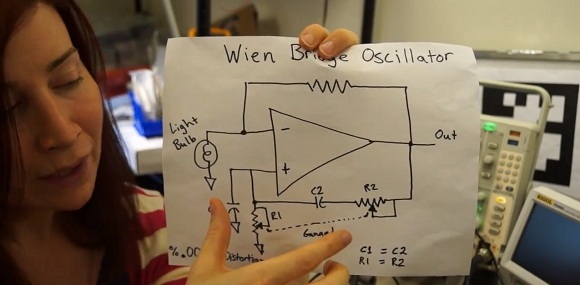
Way back when [Ms Ellsworth] was a kid, she kept seeing the same circuit over and over again in her various op-amp books. It was a Wien bridge oscillator, a small circuit that outputs a sine wave with the help of a light bulb. Now that [Jeri] is much wiser, she decided to play around with this strange oscillator and found it’s actually pretty impressive for, you know, a light bulb.
The interesting portion of the Wien bridge is the gain portion of the circuit. It’s just a simple resistor divider, with a light bulb thrown in on one of its legs. When the current increases, this causes the light bulb to warm up (not enough to glow, though). When the temperature increases, the resistance in the light bulb increases, making the oscillator reach an equilibrium.
It’s a clever setup, but what about swapping out a resistor in place of the light bulb? In the video, [Jeri] tries just that, and it’s a mess. Where the light bulb circuit is amazingly stable with very, very low distortion, the resistor circuit looks like a disaster on the scope with harmonics everywhere.
A very cool build that would be perfect for an audio synth, but as [Jeri] says in her YouTube comments, “This doesn’t have enough distortion for indie bands.”













